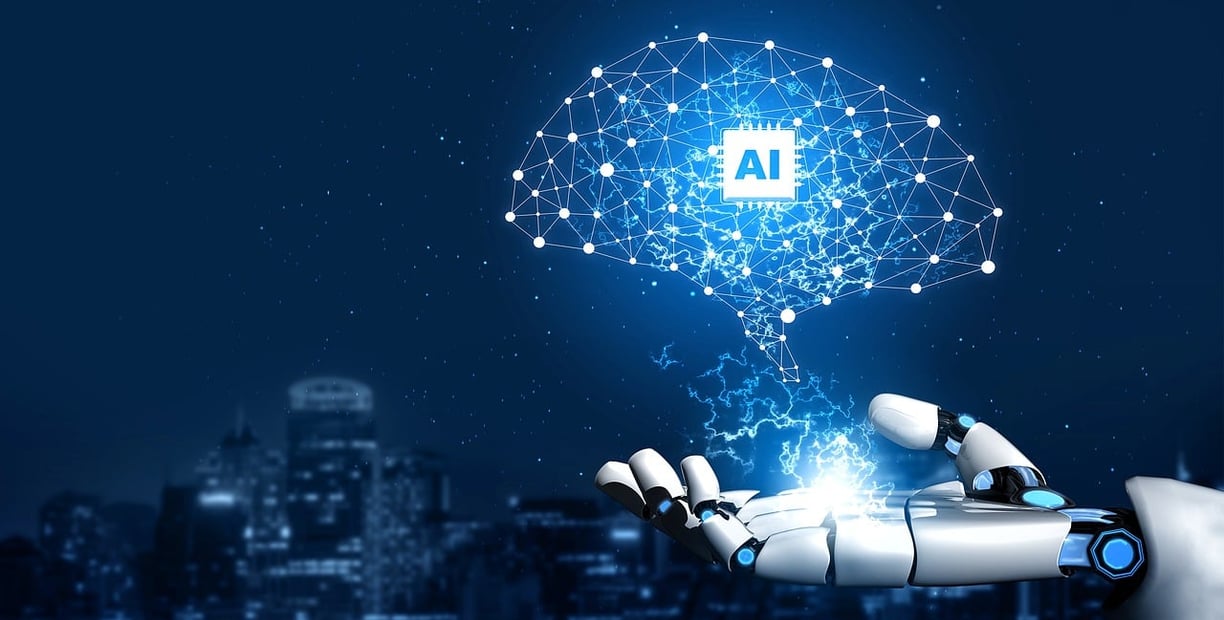The Role of AI in Defending Against Advanced Cyber Attacks
In the rapidly evolving landscape of cybersecurity, advanced cyber threats are becoming more sophisticated, diverse, and frequent. Traditional security measures, while still essential, are increasingly insufficient to protect against these complex attacks. Enter Artificial Intelligence (AI) — a game-changer in the realm of cybersecurity that offers innovative solutions to defend against advanced cyber threats. This blog explores how AI is revolutionizing cybersecurity and enhancing our ability to combat sophisticated cyber attacks.
ARTIFICIAL INTELLIGENCE
6/2/20243 min read


My post content
Understanding Advanced Cyber Threats
Before delving into AI's role in cybersecurity, it's crucial to understand the nature of advanced cyber threats. These threats are characterized by their complexity, stealth, and the use of advanced techniques such as:
Advanced Persistent Threats (APTs): These are prolonged and targeted cyber attacks in which an intruder gains access to a network and remains undetected for an extended period.
Zero-Day Exploits: These involve vulnerabilities that are unknown to the software vendor and can be exploited by attackers before a patch is released.
Ransomware: This type of malware encrypts the victim's data and demands a ransom for the decryption key.
Phishing and Spear Phishing: These attacks trick individuals into revealing sensitive information, often through personalized and convincing messages.
The Power of AI in Cybersecurity
AI's ability to process vast amounts of data, identify patterns, and make decisions in real-time makes it an invaluable tool in defending against advanced cyber threats. Here are some key areas where AI is making a significant impact:
1. Threat Detection and Response
AI-driven security systems can analyze network traffic and user behavior to detect anomalies that may indicate a cyber attack. Machine learning algorithms can learn from historical data to identify patterns associated with malicious activity. When an anomaly is detected, AI can trigger an automated response, such as isolating affected systems or blocking suspicious IP addresses, thereby reducing the response time and limiting the damage.
2. Predictive Analytics
AI can predict potential cyber threats by analyzing data from various sources, including threat intelligence feeds, social media, and dark web forums. Predictive analytics helps organizations anticipate attacks and take proactive measures to mitigate risks. For example, AI can identify emerging threats by monitoring hacker forums and flagging discussions about new vulnerabilities or attack techniques.
3. Behavioral Analysis
AI can establish a baseline of normal behavior for users and systems within an organization. By continuously monitoring activities and comparing them to this baseline, AI can detect deviations that may indicate a compromise. For instance, if an employee's account suddenly starts accessing sensitive data at unusual times or from unfamiliar locations, AI can flag this behavior for further investigation.
4. Automated Security Operations
AI can streamline and automate various aspects of security operations, from incident response to vulnerability management. Security orchestration, automation, and response (SOAR) platforms leverage AI to coordinate responses across different security tools, reducing the manual effort required by security teams. This automation allows security professionals to focus on more strategic tasks and improve overall efficiency.
5. Enhancing Endpoint Security
AI can enhance endpoint security by detecting and blocking malware, ransomware, and other malicious activities. Endpoint detection and response (EDR) solutions powered by AI can monitor and analyze endpoint activities in real-time, identifying suspicious behavior and taking immediate action to contain threats. This proactive approach helps prevent attacks from spreading across the network.
Real-World Applications of AI in Cybersecurity
Several organizations have successfully implemented AI-driven cybersecurity solutions to defend against advanced attacks. Here are a few examples:
CrowdStrike Falcon: This platform uses AI to detect and respond to threats in real-time. It employs machine learning models to analyze endpoint data and identify indicators of compromise, enabling swift action against potential threats.
Darktrace: Darktrace leverages AI to provide autonomous response capabilities. Its AI algorithms monitor network traffic, detect anomalies, and automatically respond to threats, reducing the reliance on human intervention.
IBM QRadar: This SIEM (Security Information and Event Management) solution integrates AI to enhance threat detection and incident response. AI-driven analytics help identify patterns and correlations in security data, enabling faster and more accurate threat detection.
Challenges and Considerations
While AI offers numerous benefits in cybersecurity, it is not without challenges. Some key considerations include:
Data Quality: AI models rely on high-quality data to make accurate predictions. Ensuring the availability of clean and relevant data is crucial for effective AI-driven cybersecurity.
Adversarial Attacks: Cybercriminals can use AI techniques to create adversarial attacks that deceive AI models. Developing robust models that can withstand such attacks is essential.
Privacy Concerns: The use of AI in cybersecurity involves processing large amounts of sensitive data. Ensuring data privacy and compliance with regulations is a critical aspect of AI implementation.
Conclusion
AI is transforming the cybersecurity landscape by providing innovative solutions to defend against advanced cyber threats. Its ability to analyze vast amounts of data, detect anomalies, and automate responses makes it a powerful ally in the fight against cybercrime. As cyber threats continue to evolve, leveraging AI-driven cybersecurity solutions will be crucial for organizations to stay ahead of attackers and protect their valuable assets. Embracing AI in cybersecurity is not just an option; it is a necessity in the modern digital age.
Cyber Guard Forte
